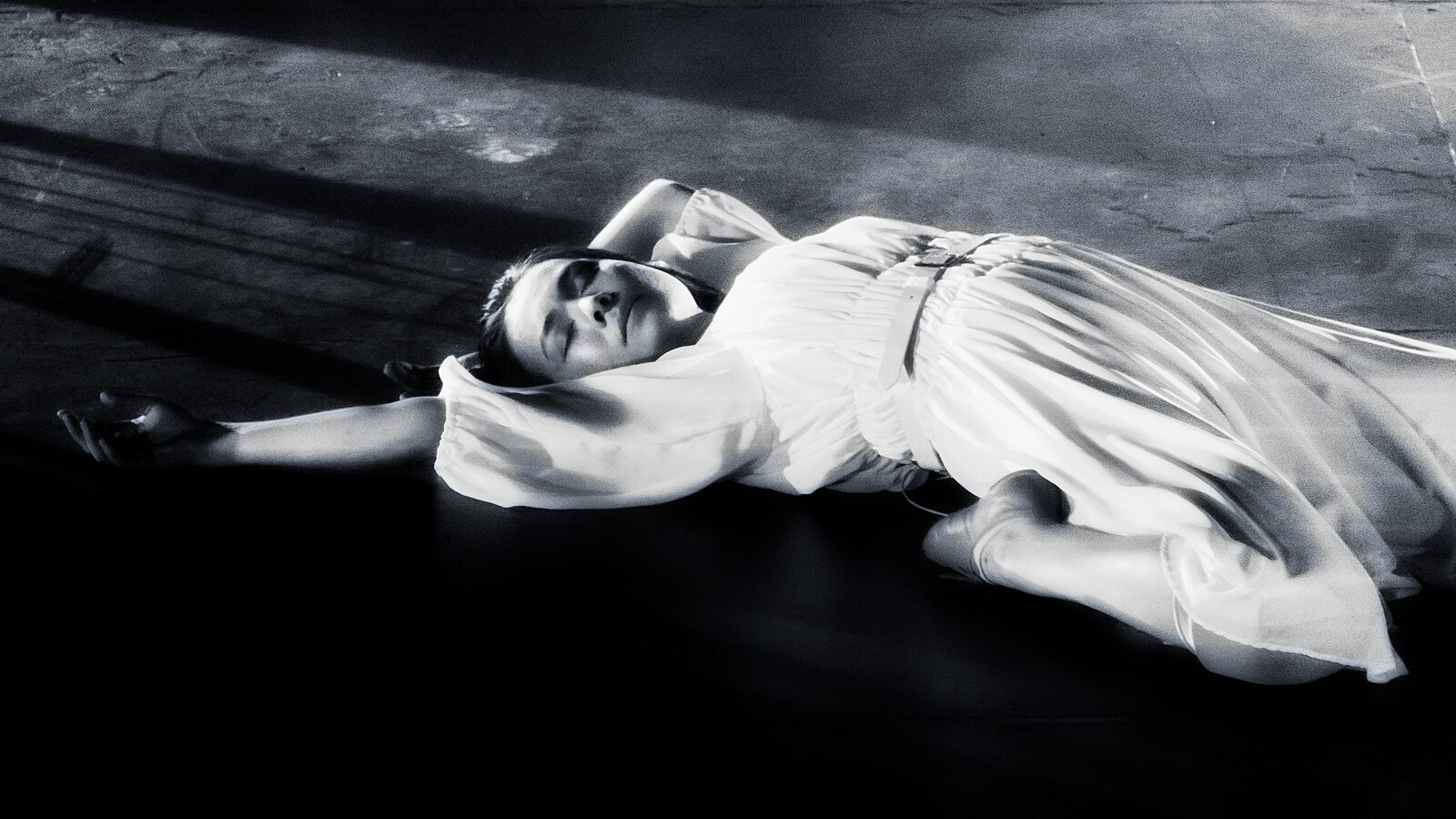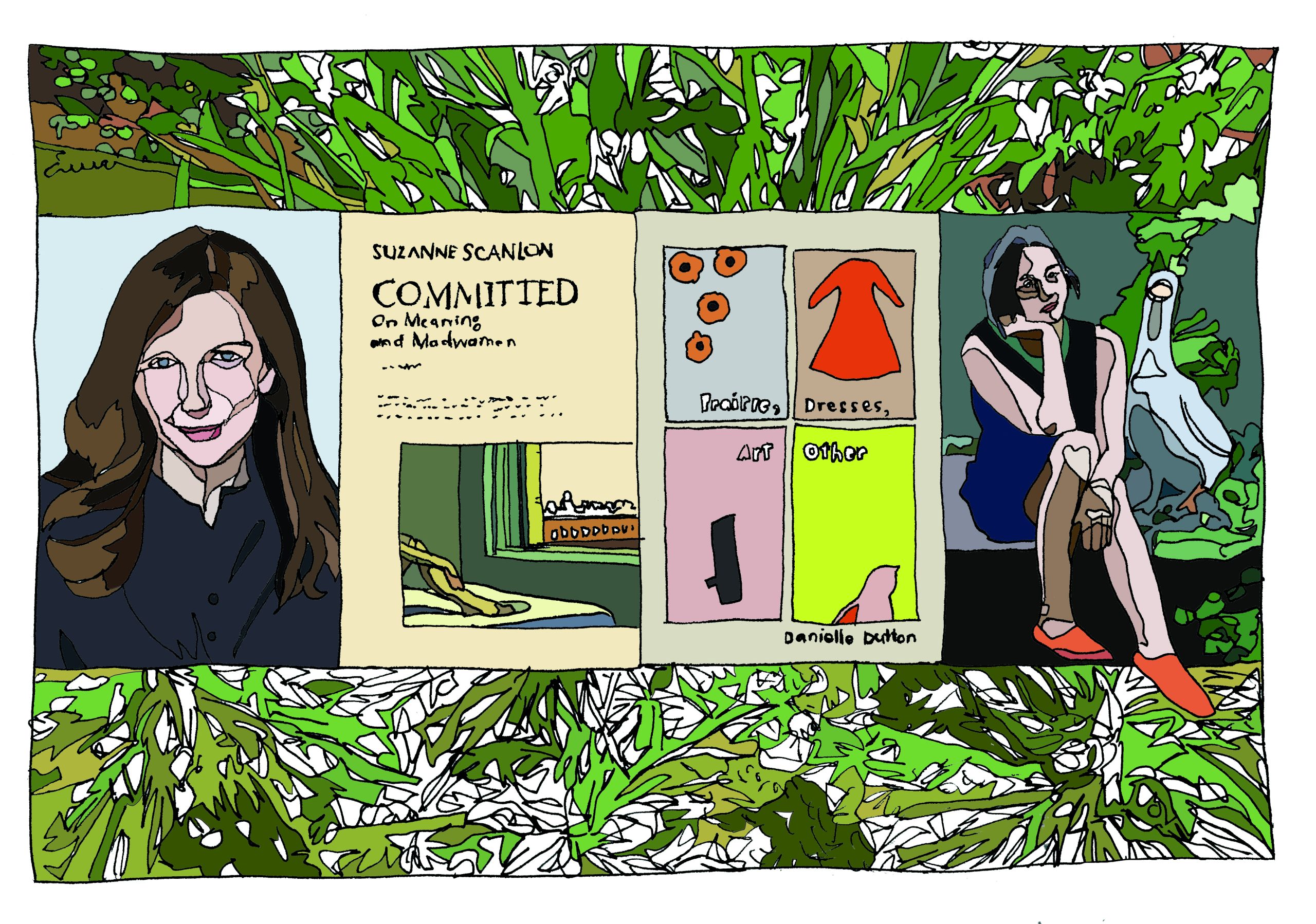Lit Mags
The Mortal Perils of Being an Instagram Influencer
"The Blue Room" by Lena Valencia

The Mortal Perils of Being an Instagram Influencer
The Blue Room
The Blue Room is lit with a cerulean light. With the exception of a narrow, elevated walkway and a pillow for visitors to sit on, its walls, floor, and ceiling are covered in blue soundproofing foam. In the middle of the floor, halfway sunken into the foam, like something washed up on a beach, is a 1994 Gateway 2000. It pulses the same cerulean, as if breathing. This is where the demon lives.
Fern has been waiting to see The Blue Room for two hours. Normally, she’s able to cut these lines. Fern is a successful art world influencer. Tens of thousands follow her account. But not even she can convince the gallery assistant to let her get any closer to the latest Josephine Fibonacci installation—likely the artist’s final work. Fibonacci has been declared missing as of last Tuesday, causing a stir in the art world. No doubt the reason for the line, which now snakes behind Fern through the streets of Chelsea. Finally, she gets to the front, where a large sign conveys the rules of the exhibition to visitors. No shoes. No jackets. No bags. No more than one person allowed in the room per session. And then: The Blue Room is a device-free space for contemplation. In order to fully experience the anechoic chamber and the demon that inhabits it, the artist requests that you surrender your electronic devices at the entrance.
Fern ungracefully removes her platform combat boots, shoving them into the provided locker along with her purse and phone. She’s prepared for this. She’s hidden a second phone—her real phone—in the pocket of her billowing silk pants.
There is some debate among critics as to whether the demon is real. Some say it’s just a metaphor for our obsession with screens, some say it’s a sophisticated optical illusion. Others have reported feeling an unexplained static electricity clinging to their skin after leaving the installation. Everyone wants to see for themselves, which is why Fern is about to do what no one has yet done: capture the demon on video.
Fern enters The Blue Room. She sits on the pillow, positioning her body so that the security guard can’t see her midsection, and pulls out her phone, slouching awkwardly to conceal it. She starts filming. For the first few minutes, there’s nothing but the blue pulsing. It’s silent. Fern hears her stomach gurgle, her breath, her heartbeat, and feels overcome with restlessness. She wants to check her notifications, but she is filming. The whisper-hum of the computer’s fan grows louder.
The demon takes shape on the screen. It’s roughly the form of a woman, face and body pixelated. It steps out of the screen and grows larger, until it towers over her. It’s wearing a long white dress, its sapphire hair blowing around its face, though there is no wind. Fern gasps. The demon opens its mouth to speak, but its voice is obscured by the computer’s fan, now loud as a train barreling through the room. Somewhere she smells burning plastic. The demon begins to twirl. Fern grows dizzy watching it. She puts a hand on the floor to right herself.
A chime goes off. The demon disappears in a flash of blue. Fern’s time is up. She stands, concealing her phone in her pants, and shakily exits the room.
Outside, Fern watches the video she’s taken. On the phone, the demon looks unremarkable: vapor, a puff of steam, but on closer inspection she can still make out the face, the dress. Her ears ring. She’s lightheaded. Perhaps this is the effect of true genius. Her phone seems to grow heavy in her hand. She realizes she’s late for drinks with her friend Amir.
Amir is drunk by the time she arrives at the bar. He thinks that The Blue Room is totally derivative, though he admits he hasn’t seen it. He’s into more transgressive stuff, she knows—Fibonacci is too tame for him. Still, she tries to explain her experience. The words come out as platitudes: the energy of the room, the strangeness of it. Amir doesn’t seem to care.
This will be the last time anyone sees Fern in person.
Back home, Fern posts about her day: selfies in line for the installation; Amir drinking; a sidewalk stencil reading “Never give up on beauty”; the video of the demon. Views and messages begin to roll in. Then, without warning, her phone dies right there in her hand. She groans and plugs it into the wall to charge.
Fern tells people that she’s able to fully support herself through the endorsements she gets on Instagram but the truth is her brother Ricardo, who works at a hedge fund, pays her rent and her phone bill. The endorsements can pay for groceries on a good week. Mostly the companies just send her free clothes and jewelry to wear and post about.
She lives in a loft above a steakhouse with a roommate who is never home. The aroma that lingers in the airshaft means Fern is always hungry for meat, though she’s been vegan for years. She’s spooning leftover takeout rice into her mouth when she hears a moan. She peeks out the kitchen window, expecting to see a cat in heat. All that’s there is a cook having a cigarette.
On her bed, the phone has switched on again. It’s frozen on a light blue screen. Fern realizes with a little shiver that it’s the same color as the Fibonacci installation. Then she hears it again: a guttural moan, low and drawn out.
It’s coming from the phone. She tries to stop it, frantically pressing various buttons, but the blue remains and the moan grows louder. She flings the phone onto the hardwood floor. This doesn’t do any good either. A crack has formed in the screen. Smoke curls from beneath the glass. Fern smells the burning plastic from the installation. She gags.
The vertigo sweeps over her and all she can see is blue.
For the second Thursday night in a row, Fern isn’t at the gallery openings, which is unusual. Amir has wandered through all of them, refilling a disposable plastic cup with bourbon from his flask. It feels weird to be here without Fern. Her Instagram hasn’t changed since he checked on it a few days ago. She’s deleted all the content, save for a single video of her twirling around in endless circles. Or is it her? It seems the longer he looks, the more her features begin to alter.
An arm creeps around his waist and he jumps. It’s one of Fern’s friends, a willowy art critic whose name he can’t remember, drunk.
“Amir!” she exclaims, shoving a strand of platinum hair away from her face. “Can you explain this pretentious crap to me?” On her phone is a tiny twirling Fern.
He takes the phone from her for a closer look. The pursed expression on Fern’s face, which he’d originally thought was concentration, turns wilder, more panicked, each time it meets the camera. It occurs to him that wherever she is, she doesn’t want to be there.
“What the hell?” the critic whines, her face a lipsticked mask of indignation. He’s been staring at the video for too long. The art critic wants her phone back. He hands it to her, dazed, and she disappears into the crowd.
“The Blue Room” will be collected in Tiny Nightmares: Very Short Stories of Horror, forthcoming from Catapult in October.








